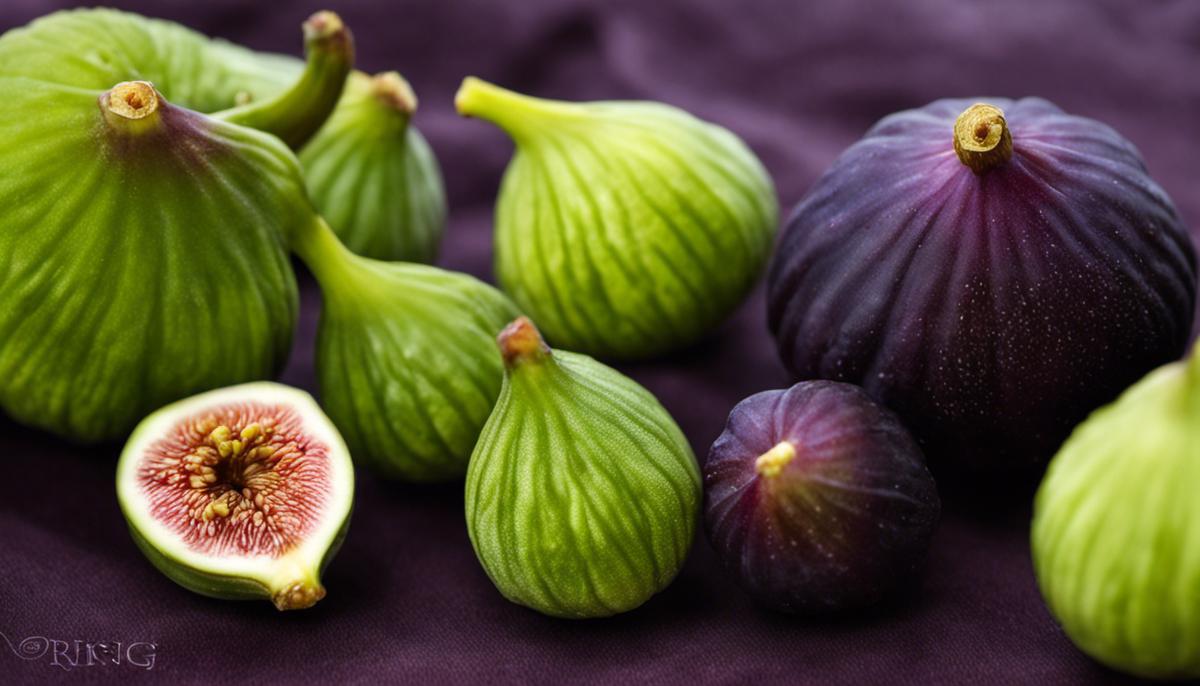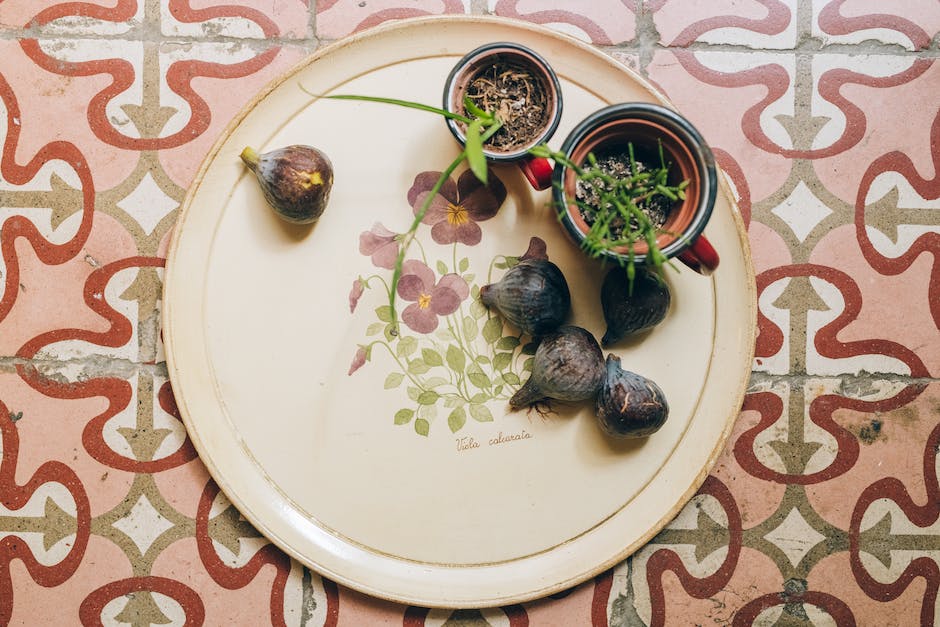Determining When Figs Are Perfectly Ripe: A Guide

There’s a uniquely sweet and delectable wonder in every bite of a perfectly ripe fig. But how do you tell that a fig is at its prime? Getting to understand the fig ripening process makes all the difference. It’s intriguing to watch the changes in color, texture, and size as this delicious fruit journeys from its initial stage to the final ripe stage. It’s not just an aesthetical transformation, but a transformation into a fruit that’s an ultimate delight to the palate. This is an adventure into the world of figs, where you’ll understand the clear signs a ripe fig presents, from its appearance to the ease of plucking it from the tree.
Understanding Fig Ripening Process
The Dance of Fig Ripening: An In-Depth Look at the Stages
We all know that mouth-watering moment when we bite into a perfectly ripe fig. That explosion of sweet, slightly peachy and earthy flavor sets our taste buds alight. Yet, understanding fig ripening is a delicate art form, tracked through several stages. Each stage comes with its own hints and clues on the journey from the tree to your plate.
Stage 1: Bud Formation
The very first stage is bud formation. The fig appears as a small, tear-drop shaped bud. At this point, it’s still very much attached to the tree and is far too green and hard to eat. But don’t be disheartened—these tiny, green buds are a beautiful prelude to the succulent fruit they’ll grow into.
Stage 2: Growth and Development
Watch with wonder as the fig undergoes its metamorphosis. The little bud will begin to expand slowly, taking on a more robust and rounded shape. This maturing process varies depending on location, breed of fig, and current climate conditions. With patience, the fig continues on its culinary journey, inching ever closer to ripeness.
Stage 3: Ripening Coloration
Here’s where the magic happens. The fig starts to demonstrate its ripening through noticeable changes in color. It shifts from its unripe green and progressively takes on its ripe color. Some figs will tend toward a deep purple or even black, while others transform into shades of amber or yellow. It’s a mesmerizing spectacle, as if each fig is robed in its best attire, about to show off at the fruit ball.
Stage 4: Softening
If we assume color change to be the visual cue to ripeness, softening is the tactile clue. With time, the fig will lose its initial firmness and will yield slightly to the touch. It’s a delicate balance: too soft and your fig might be overripe. When gently pressed, it should feel akin to a ripe peach, offering mild resistance.
Stage 5: Full Ripeness
The pièce de résistance, the final stage of ripening! Fig aficionados understand that this stage is brief and fleeting, a mere snapshot of time. More than just color or texture, the fig’s droop on the tree is a surefire indication of ripeness. The weight of its juicy, sugary goodness bows the stem, signaling that it’s ready to be harvested. Taste-wise? Expect a delicious symphony of sweetness with a touch of complexity, embodying the fig’s bold, earthy undertones.
Unwrapping the stages of fig ripening is like defrosting a giant ball of flavor, each layer revealing another step towards stomach-grumbling deliciousness. Understanding these stages not only educates, but also paves the way for fresh, sweet, and balanced flavors on our plates—a true testament to the joy of food and the fellowship it can create.

Signs of a Ripe Fig
Rejoicing in the ripeness of the exquisite fig! This is the final act in our fig saga, where we delve into the remaining yet vital indicators of a perfectly riped fruit. Without further ado, let’s delight in the nuances of choosing the finest figs.
Figuring out the “Feel”:
The transformed color and softening texture does give away a lot about the ripeness. However, there’s more to uncover. Touch the fig lightly. An unripe fig tends to be hard, while overripe figs can feel squishy. Meticulously, look for a fig that yields to slight pressure – much like a peach. It should have a slight give but shouldn’t be mushy. This suggests it’s at the peak of perfection, and eagerly awaiting to be devoured.
Scent – The Aromatic Lure:
A perfectly ripened fig will exude a sweet fragrance that can be mildly described as a mix of honey and nuts. So, it’s essential to trust your nose. When you bring a fig close to your sense of smell, if it fills your nostrils with a light, sweet scent, you’ve hit the jackpot! Be wary though, as an overly sweet, almost fermented scent is a clear sign of an overripe, or worse, spoiled fig.
Detecting the Dew-like Drops:
Often overlooked, this is a spectacular sign of a fig’s peak ripeness. When you notice a fig exuding what seems like fresh dew or sugary syrup at the base, it’s a glorious sign. These are in fact, the fig’s nectar, hinting at you that it is in its prime and ready to grace your palate with its sweetness.
It’s All about Gravity:
Another fascinating cue to look out for is the hanging behavior of the fig. As figs ripen, their attachment to the tree slightly loosens and they tend to droop due to the increased weight. A hanging, almost drooping fig is a delightful signal to fig lovers that their fruit has reached its ripest stage.
Remember, each fig is an individual, ripening at its own pace. Therefore, elements such as texture, scent, sugary exudation, and its droopy behavior should guide you towards choosing the fig that is worth your while. So, arm yourself with these handy tips the next time you venture out for fig picking, and enhance your culinary creations with the richness and sweetness of perfectly ripe figs.

Ripening Fig at Home
Ripening Figs at Home: Making Nature’s Sweet Delights Even Sweeter
Picking figs straight from the tree is truly a joy for all food lovers. But what if your eagerly harvested figs aren’t quite at their perfect ripeness stage? Gastronomy enthusiasts, let’s unite in the kitchen, play mother nature for a bit, and learn how to ripen figs at home!
Let’s delve into the process, but remember, patience is key in this culinary journey. Figs are delicate babies that need a dash of TLC to fully unlock their sweet, delicious destiny.
The best way to accelerate the ripening process? Bag it up! Yes, you read right. A simple brown paper bag from your pantry can be your trusted ally in this endeavor. This method creates an ethylene-rich environment, ethylene being a natural gas that fruits release during ripening. The trapped gas speeds up the ripening process, making it the perfect, snug little nursery for your figs to mature.
Place your unripe figs gently in the bag, ensure it’s well sealed, and let them get cozy in a warm location. The countertop in your warm, love-filled kitchen should do the job splendidly. You don’t want the figs too crowded, though, give them some room to breathe.
But not all heroes wear capes or, in this case, belong in paper bags. No, my fellow food aficionados, the charmingly humble banana can be a fantastic fig ripening companion! Bananas are ethylene-producing stars and having them in close proximity can really kick things into high gear. So why not, introduce your lovely figs to a few friendly bananas in the paper bag and watch the ripening magic unfold.
And how do we demonstrate our culinary sophistication? By knowing when to stop the process, of course. When your figs turn a deep, dark color, and start to slightly droop due to their honeyed, heavy insides, it’s time for them to exit the paper bag stage.
Now for the pièce de résistance, the tasting! Ripe figs will offer a jam-like sweetness that’s an absolute delight for your tastebuds. The culinary adventure you embarked upon, the patience, every minute invested brings you to this moment. The satisfaction of biting into a well-ripened fig is a gastronomic saga in its own right.
While we’ve run the gamut on ripening figs at home, always remember that the best figs are those allowed to ripen on the tree. However, when that’s not an option, we hope this guide will be your trusted adviser in your fig ripening venture. Let’s continue to celebrate food, with a handful of ripe figs and a heart full of joy. Oh, the phenomenal tales of flavor that culinary pursuits like these weave!

Determining when figs are ripe is not just an art but a science that home gardeners and fruit lovers can easily master. The journey doesn’t stop once the fig is off the tree, however. We delve deeper to explore the ways you can further ripen figs within the comforts of your own home, and the conditions such as temperature and storage method needed to accomplish it. Understanding fig ripening can make all the difference between enjoying a juicy, sweet fig and a less satisfying experience. With this newfound knowledge, soon you’ll be biting into the finest figs at their peak of ripeness, making every fig eating experience a memorable delight.



